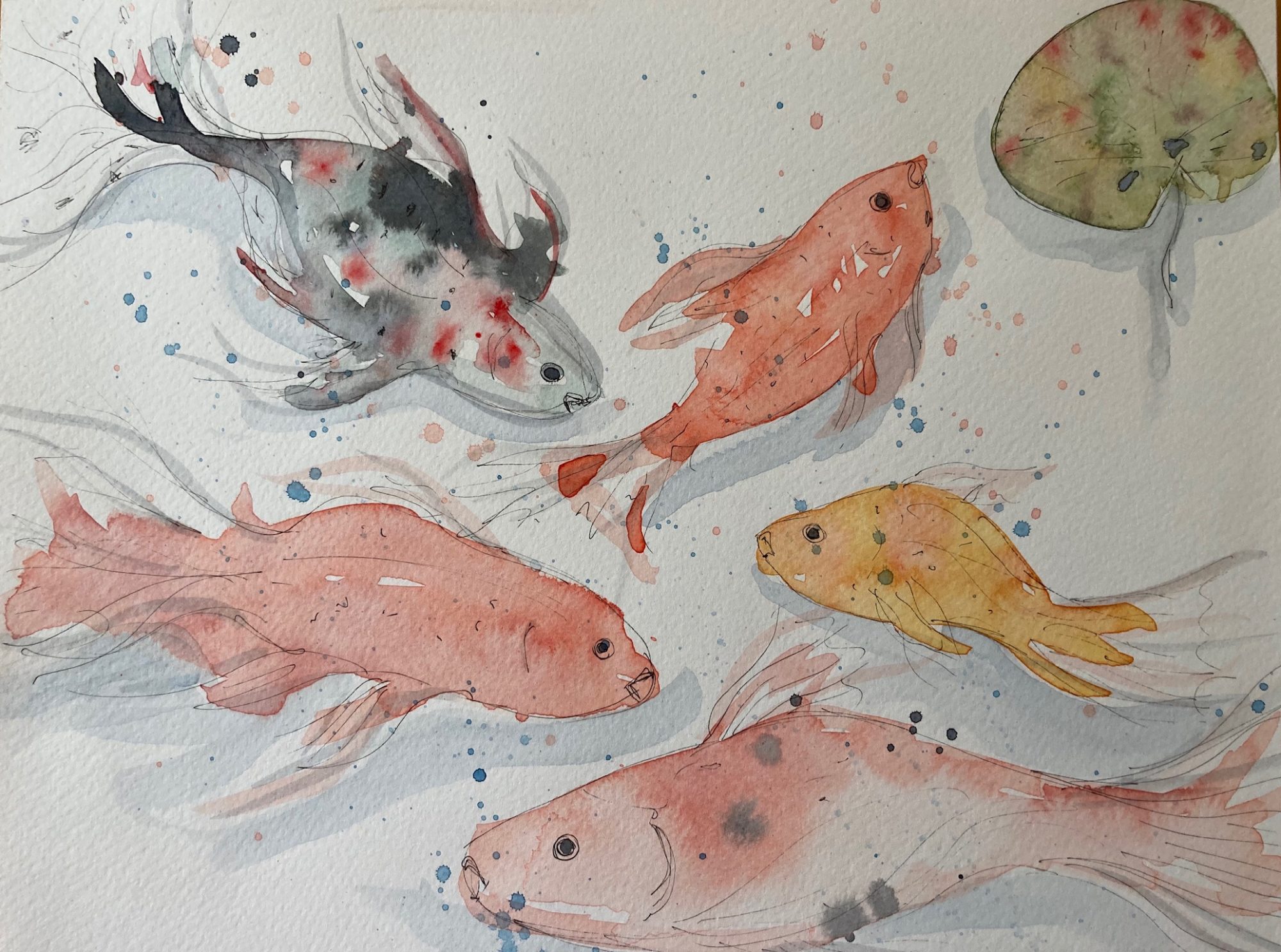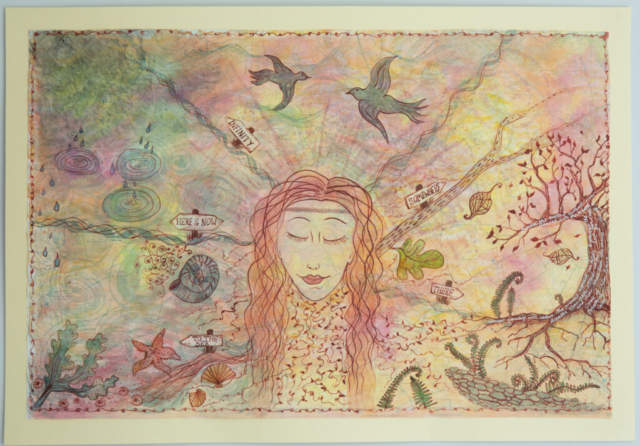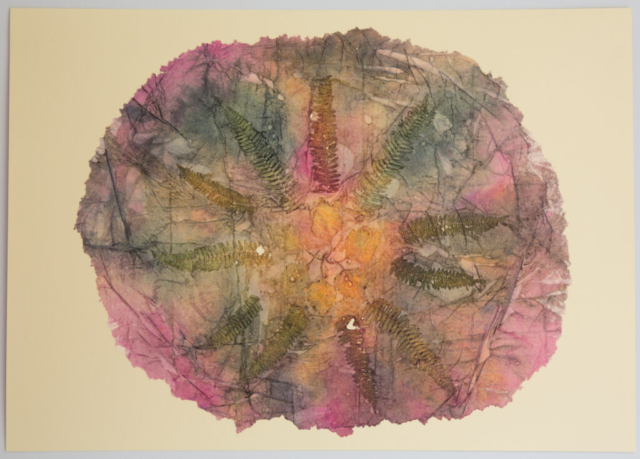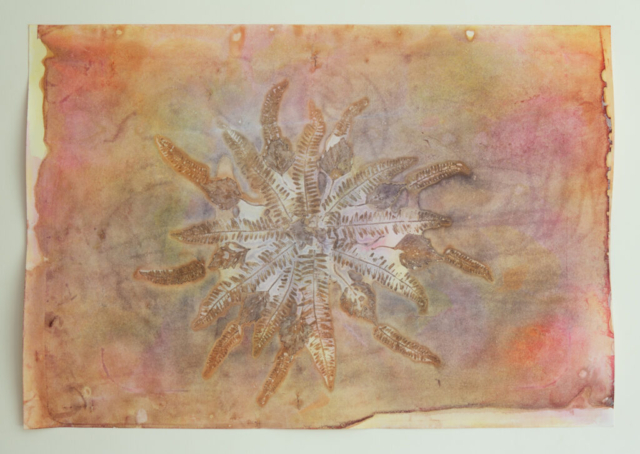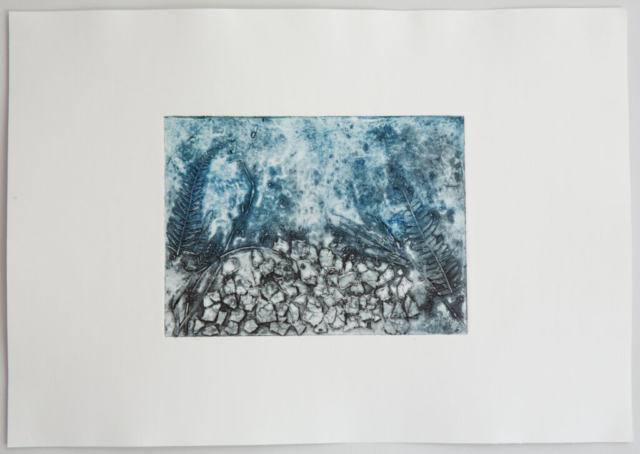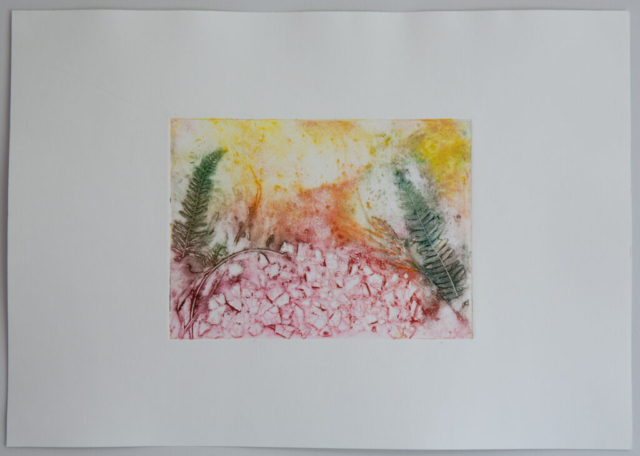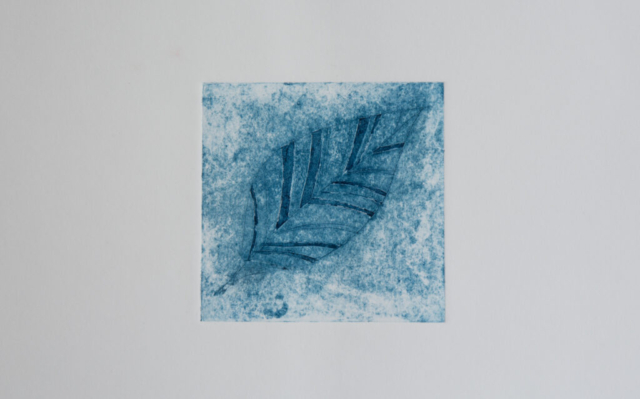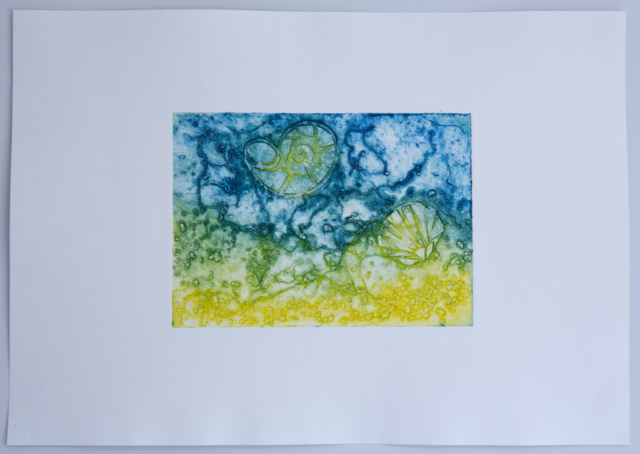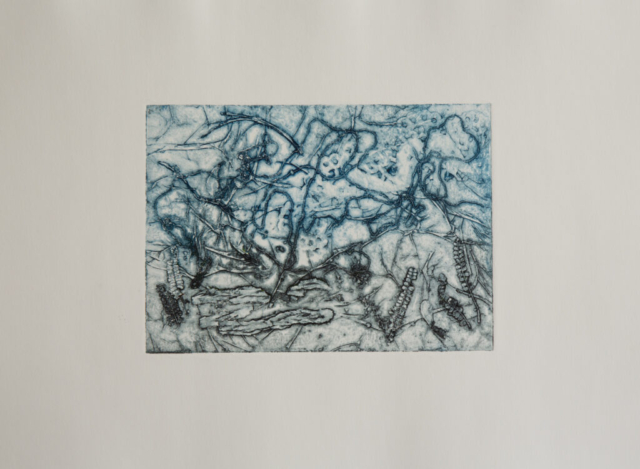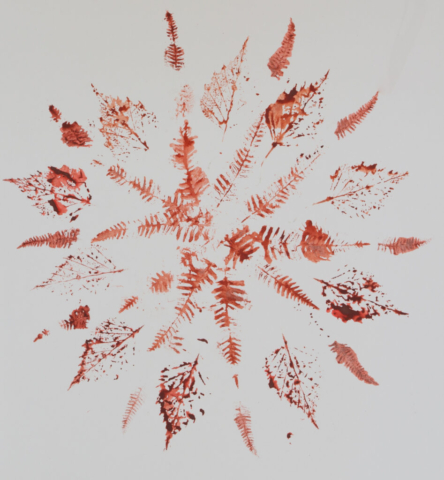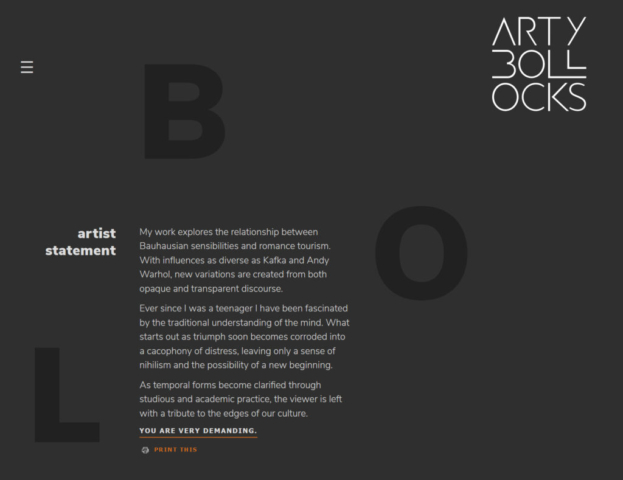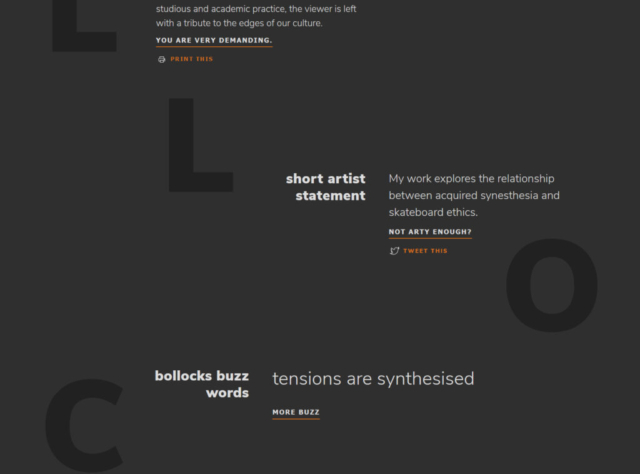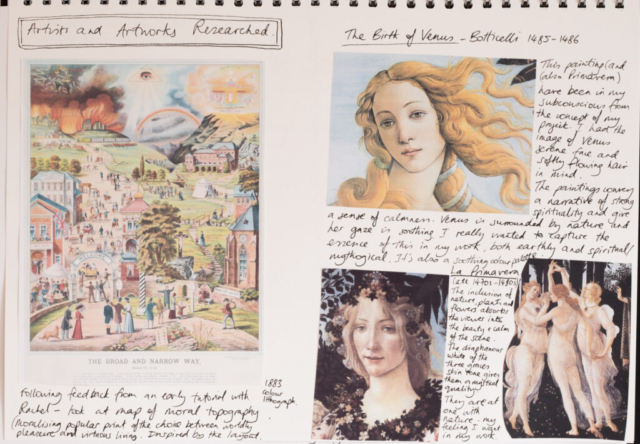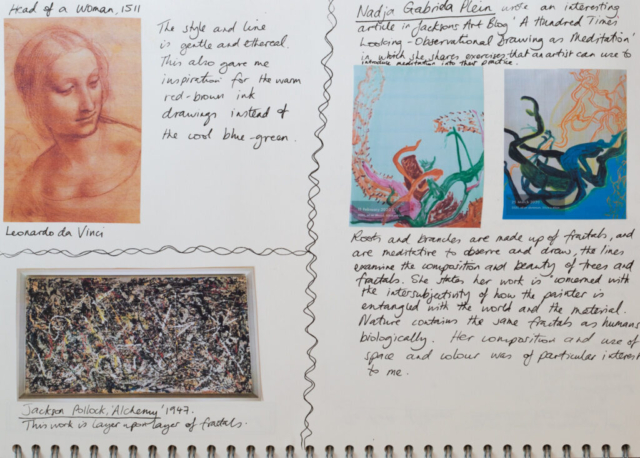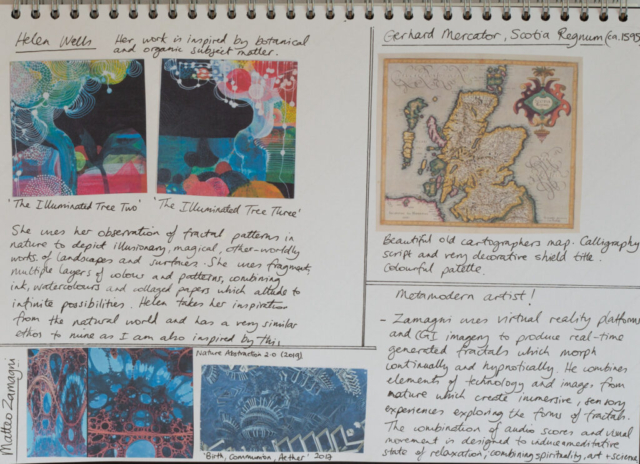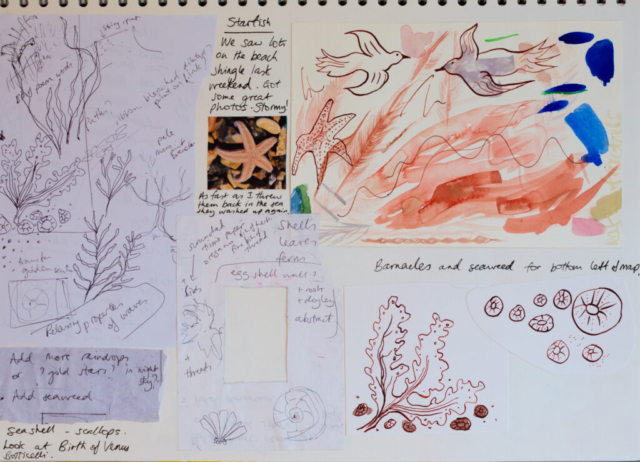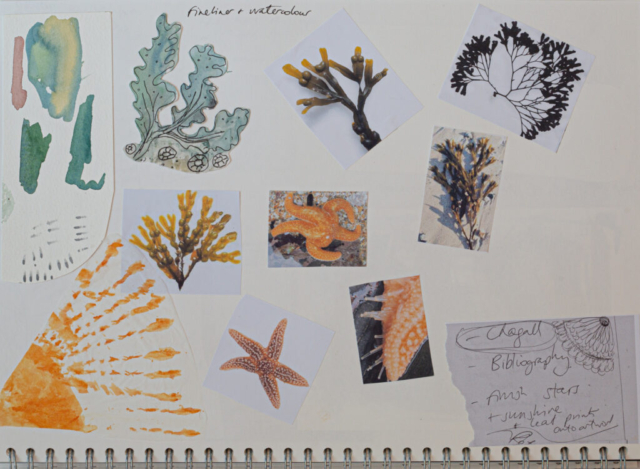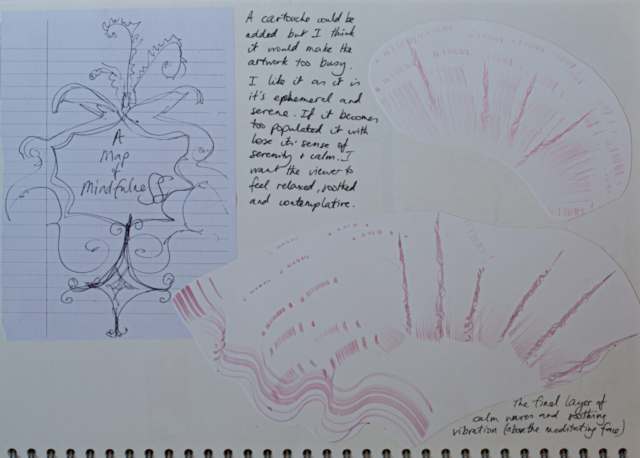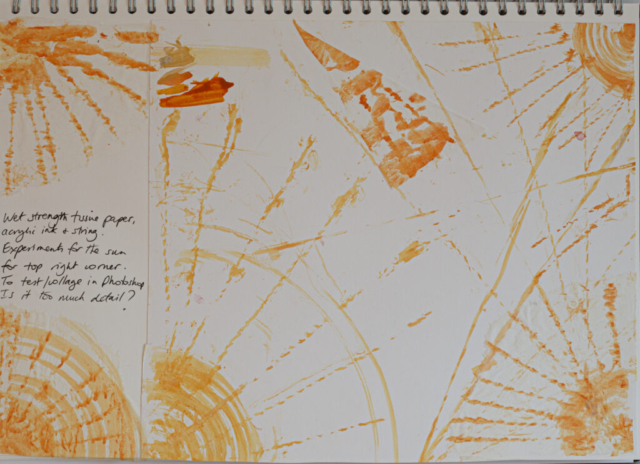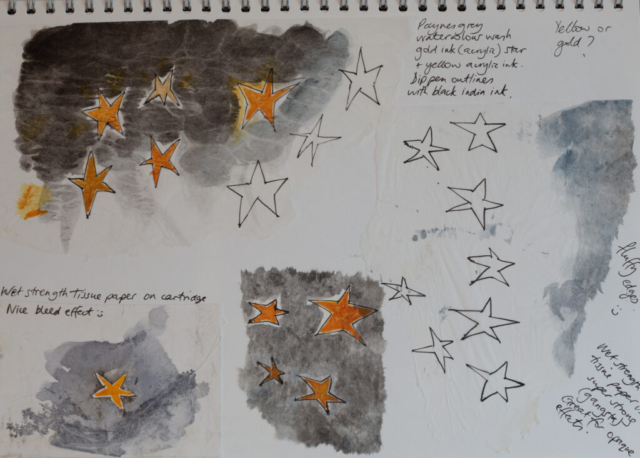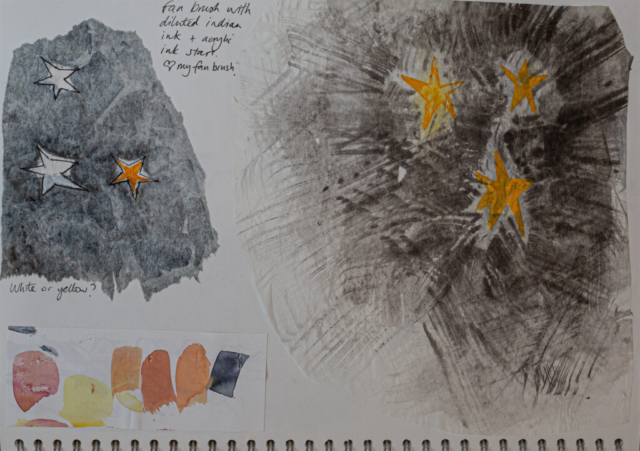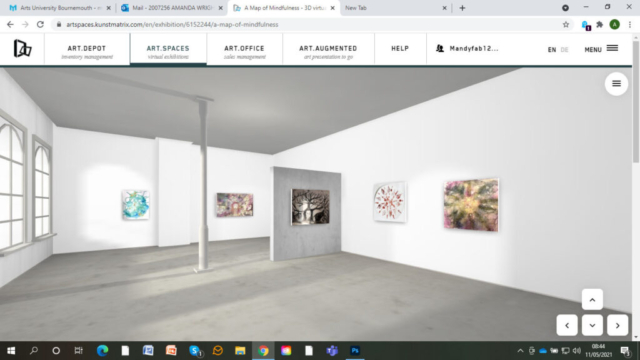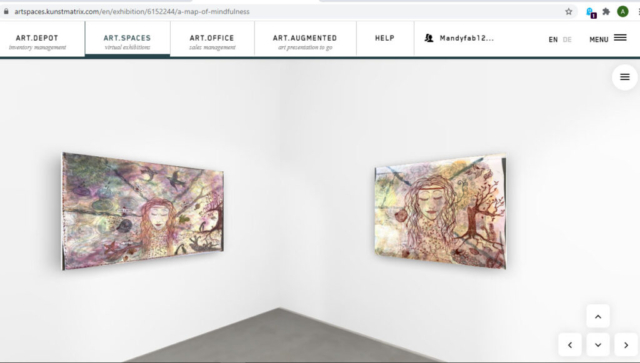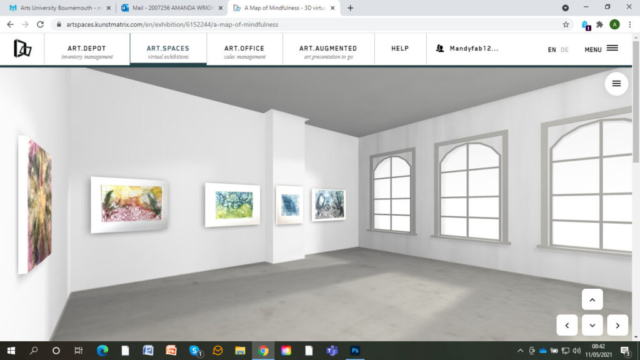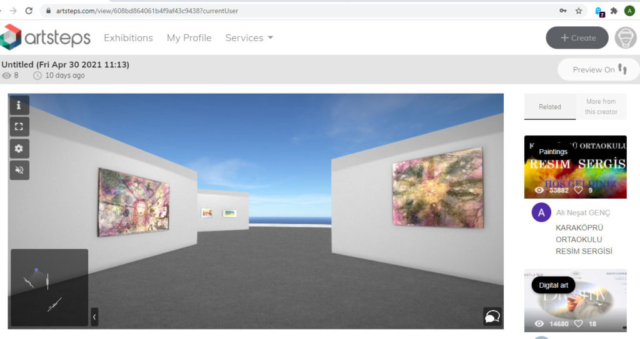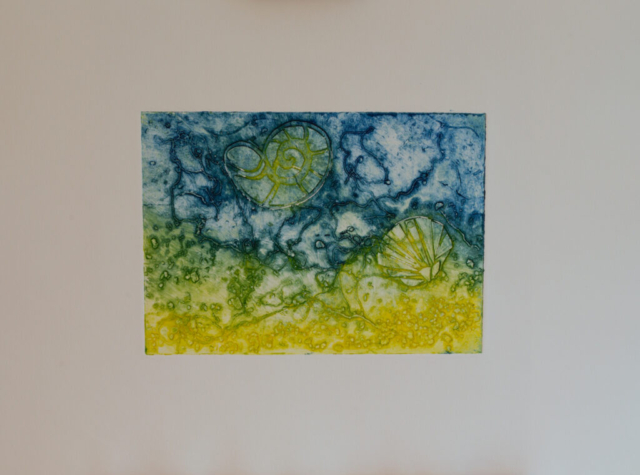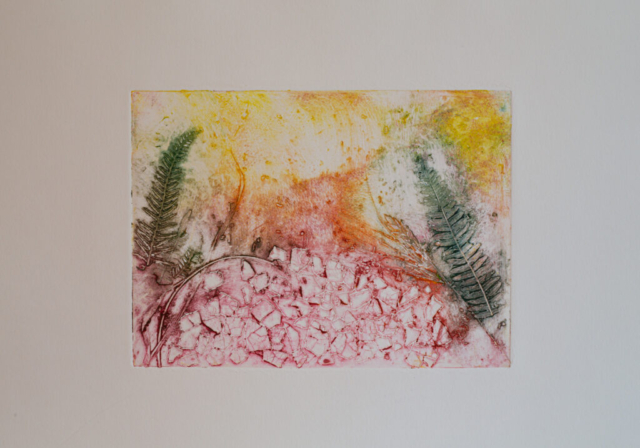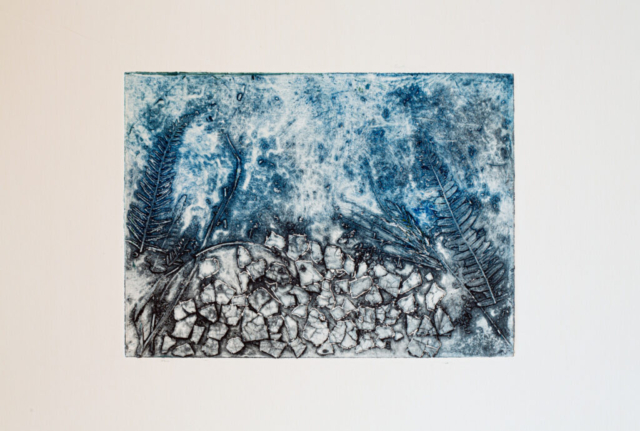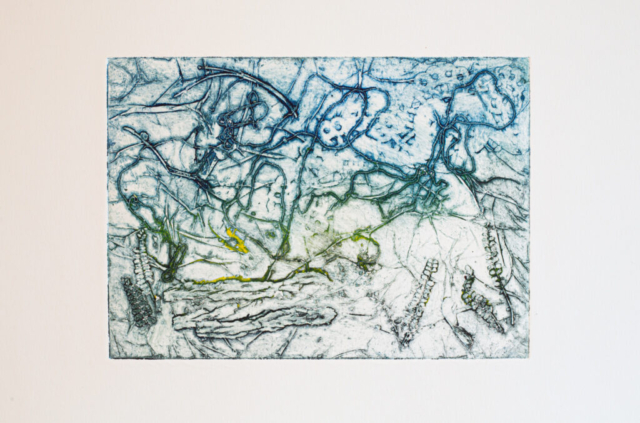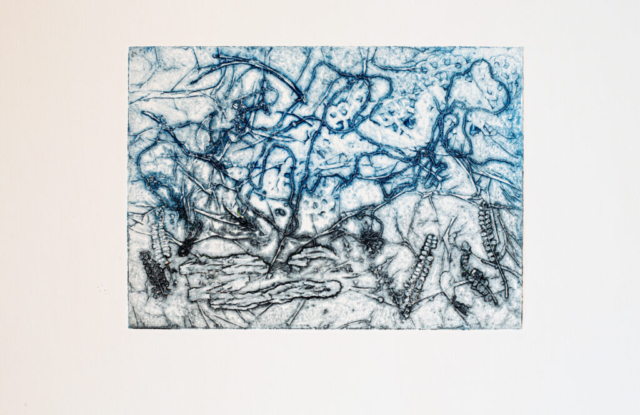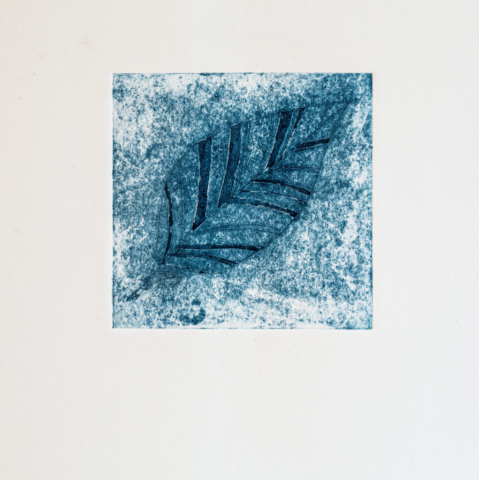Presenting (above) my body of work for submission for the Final Major Project. The main image is a “Map of Mindfulness” – my completed artwork as described from my proposal at the start of the project. This map is not a map by which to find a route, it is a symbolic dreamlike representation of an imagined meditational place, highlighting the connections between nature and mindfulness. My research and development of ideas has been mostly relevant in guiding me to this end result. I have read extensively about the benefits of meditating and finding relief from stress and anxiety in nature (in mental health forums and in published research about the benefits of spending time in nature), how fractals are found everywhere and how they relate to maps and human and biological anatomy. At one point I was quite overwhelmed by the different ways of illustrating a map, from fantasy to geographical.
Throughout my project I have regularly referred back to my initial proposal to review that I was achieving what I had set out to accomplish, and also to check that I had not changed my course. Once I had established what elements to include to create a mindful feeling, the process began to flow more easily and the next stage was deciding on the style to use in my work. The most difficult decision was in establishing the overall composition of my map as it is not meant to have a fixed path but an imagined one in the mind. By overlaying my layers onto an Ordnance Survey map I was able to link a topographical map with an imaginary atmospheric one of meditation. I wanted there to be a connection to the “here and now” by showing an actual topographical base layer, but also to visualise a serene sense of meditation.
At the start of Stage 2 I didn’t relish the task of meeting a set brief and just wanted to make art for art’s sake. Since then, I have worked through the design process, and really enjoy the challenge of designing a proposal and meeting a brief. The first idea is not always the best idea, and unexpected outcomes can be developed from experimentation, reviewing and remixing ideas. I definitely enjoy working to a short brief and always like to include some meaningful text with my images. My initial pathway was Fine Art, but my practice has significantly developed throughout the projects and now my interests lie strongly within authorial Illustration. I am also interested in printmaking processes, and experimented with collograph printing in this project, but was unable to get the ethereal effect I wanted as the paper used is very thick. I am a novice at digital rendering of art, and had my skills been more advanced I would have used some of the elements from my collograph prints. I have included my prints in my final submission of my body of work from the project, and displayed them in a (free) virtual gallery exhibition mock up on Kunstmatrix. I will submit them for inclusion in Emerge 2.1 class of 2021 exhibition.
The clearest aspect of Foundation from the outset is that I feel I have been forced down a digital illustration route, and sometimes the pressure to use digital illustration has been very stressful. I am not very technically minded so using Photoshop and Illustrator have been challenging, especially during lockdown over Zoom! However, I have pleasingly had some success with using them as a support tool rather than producing or designing art digitally. They will certainly be beneficial to my practice in the future. It has become clear that I need 1:1 tuition in learning Photoshop, Illustrator and Lightroom, and it is on my “To Do” list in the near future, as I am keen to build competency in these skills. An unexpected technical complication was in adding photos from my iphone to my blog. The size of each image was too large, and I needed extensive help from my husband Ashley in changing the image size by re-photographing them with his Canon camera and uploading them in RAW format, then converting them using Lightroom to jpg. format. I should have started adding sketchbook and progress photos to my blog earlier in the project and then perhaps I could have learned this as I went along!
